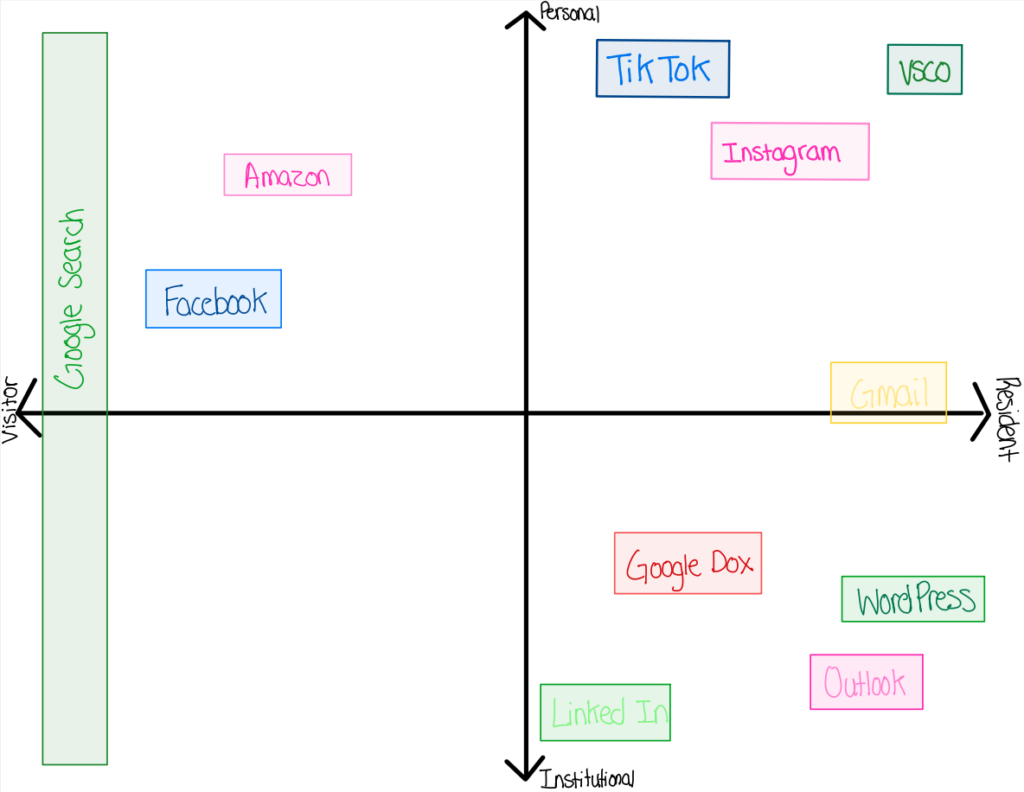In this week’s blog, I worked on organizing my online presence into a map. My map mainly consists of personal and resident online presence through social media and primarily resident and institutional for all my work and school online presence.

What digital platforms are students currently using to develop their professional network?
A majority of students in this day and age use social media on a daily basis to connect and share their lives with others. However, this issue separates your daily social lives from your professional digital identity. The most popular platform used to build a professional network is LinkedIn. Students and business professionals use this platform to display previous jobs, skills, experience and education. Students also use social media platforms in a professional manner by creating new accounts or adding links to their personal profiles for their professional platforms.
What could the student consider in expanding their professional learning network?
Learning networks can vary depending on the age of students, however, a great start would be finding an audience, researching your audience, creating a networking plan, and finally using social media and the internet to execute. Knowing who the target audience is is the best way to start planning your online learning network.
How does data privacy and security limit and/or promote a PLN?
I think privacy can limit your PLN in some ways but it allows you to promote in an safer way. Limiting it by controlling the kind of information that is shared without consent which makes it harder to develop and maintain connections within a professional learning platform. However, this keeps your information safe, allowing you to have more trust in the information being shared. There are both up and downsides to privacy and how it affects PLN, but with the internet growing at a rapid rate, having more privacy is safer to avoid misinformation being spread.
In your network, how can you create a digital identity/ reputation?
One can create a digital identity and reputation by engaging, connecting with like-minded individuals, following accounts, getting people’s opinions, and sharing, posting, and commenting. Any online presence counts towards one’s digital identity. Your reputation is created by who you chose to engage with and what you choose to share using your digital identity.
Consider how an employer would respond if you applied for a job with them and they assessed your social media presence via your digital identity.
Based on my professional digital identity via social media, I would conclude that an employer would view my presence as positive, professional and organized. I have a clear presence which represents my learning platform separate from my personal digital identity. Employers would find my digital identity helpful in determining what kind of person and employee I would be.